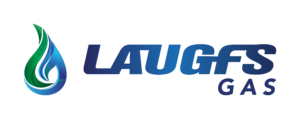The Voice of W.K.H Wegapitiya, founder Chairman, Laugfs Holdings Limited
The Voice spoke with W.K.H Wegapitiya, founder Chairman, Laugfs Holdings Limited, to hear his thoughts and goals for Laugfs Gas.
 Please tell us a little about Laugfs Gas and its key activities
Please tell us a little about Laugfs Gas and its key activities
Laugfs Gas PLC is one of the two players engaged with the LPG downstream industry in Sri Lanka today. We entered into this industry in the year 2001, with the process of liberalisation of the petroleum sector undertaken by the then Government which included the LPG operations in the country as well, ending the five year monopoly status provided for “Shell Gas” under a previous privatisation agreement entered into. The company grew significantly since then, and its parent Laugfs Holdings Ltd too, diversified into many unrelated fields of businesses and at present it is one of the largest business conglomerates in the county.
Laugfs Gas PLC, was listed in the Colombo Stock Exchange in December 2010 and was looking forward for regional expansion. In the year 2012, it acquired the then third largest market leader in the LPG downstream industry in Bangladesh and operate this entity as Laugfs Gas (Bangladesh) Ltd since acquisition.
We at Laugfs, have always emphasised the significance of integrated operations of the entire LPG value chain and are looking forward to engaging with the integration of mid and downstream activity to derive greater benefits. Consequently, we floated Laugfs Maritime (Pvt) Ltd with ownership of a fleet of LPG carriers. Laugfs Terminals Ltd constructed a state-of-the-art LPG Transshipment Terminals at strategically important Hambantota International Port with a storage capacity of 30,000 m/t which can be turnaround three times per month. Laugfs Gas PLC floated yet another subsidiary SLOGAL Energy DMCC, in Dubai to be engaged with LPG procurement and trading.
We intend to integrate the mid and downstream activities of LPG further and to its full capacity in the short term and hopefully, it will be a force to reckon with in LPG business landscape especially in the Asian Region, in the future.
Could you tell us a little about your career path to get you here?
Even when I was a student at the university pursuing a degree in Business Administration I believed in myself and of the entrepreneurial skills I thought of having with me. After graduating, I spent short stints as an intern and also as an entry level employee at two large companies. However, I quickly commenced a start-up of my own in freight forwarding and it proved to be a success despite intense competition by larger rivals. While working in freight forwarding, an idea was brought in to enter into a pioneering venture to convert the petrol driven automobiles into LPG driven ones, which is what we call today the Autogas industry. The small undertaking commenced with the participation of several colleagues and with the assistance of a venture capital company, was an instant success. We had sufficient resources, acquired skills and invaluable experience in business especially in LPG by the time the Government of Sri Lanka decided to liberalise the petroleum markets including LPG. We were bold enough to accept the huge challenge ahead of us and to entered into LPG downstream industry at that time and we never looked back since then and the rest is history.
What do you see as the key challenges today in your market?
As stated earlier we are presently engaged with mid and downstream activities of LPG. In the downstream sector we operate both in Sri Lanka and Bangladesh. Thus the challenges are different in the downstream sector in the two countries we are engaged with, even though both markets are growing, exponentially in Bangladesh and reasonably well in Sri Lanka. In Bangladesh the unprecedented market growth attracted large number of new participants both big and small, but the challenge is the self-regulation by the market participants to avoid the destruction of the market that is booming. The participants have the challenge to compete in the market sensibly, without undermine each other in the distribution channels, which will finally ruin the prospects for every player involved.
As far as the Sri Lankan market is concerned, it was an over-regulation by the authorities without implementation of the New Pricing Formula. The challenge over here is convincing the authorities concerned, to adopt the pricing formula agreed upon by the stakeholders to look after the interests of both market participants and the consumer at large.
Our challenge with the mid-stream activity is to effectively integrate the value chain of storage, trading and ocean transportation with full utilisation of strengths and the respective capacities and we are hopeful of meeting the challenges successfully in the short term.
What are the main opportunities for Laugfs Gas today?
As you know, we are engaged with both mid and downstream operations of LPG, being in the mid-stream sector is a great opportunity to compete in the downstream operations effectively. We have the advantage of procurement of LPG in bulk via MGCs and VLGCs having greater economies of scale. Besides, we derive the advantage in cost of freight as well, with procurement of cargo in large bulk. Another opportunity is our own fleet of LPG vessels deployed for outward ocean transportation of cargo. Most importantly our transshipment terminals can cater to the storage requirements of cargo for both of our captive and non-captive markets. The capacity of our transshipment terminals is available for any other supplier or trader in LPG. The downstream will have all the opportunities of integration to compete in the market and also the ability to pass the benefits adequately to the consumer public and thereby to grow the market further.
How do you see the future of the LPG market?
The LPG markets in the future is well secured, overwhelmingly stable and would continuously grow as the global economies invariably grow over the years. As regards domestic markets there is an enormous untapped market in the developing nations especially in the Asian and African business landscape. Its commercial and industrial applications are growing with the growth of the economies. LPG is a source of energy even for commercial scale power generation which could compete against thermal and even certain LNG applications. We are very optimistic about the future of the LPG markets and it was precisely why we are involved with the entire value chain of this industry.
Anything else you would like to add?
LPG as a source of green energy shall muster the active support and assistance from all stakeholders most importantly from the respective state authorities not only as a regulator but also as facilitator to promote this source of energy. WLPGA is an important stakeholder engaged with this industry globally as a facilitator and a strong lobbyist. Over the years they were effective and has done lot to the growth and development of the industry. We shall support and contribute WLPGA to expand its scope, especially to draw up an administrative structure to focus on regional interests of the industry and its stakeholders.
